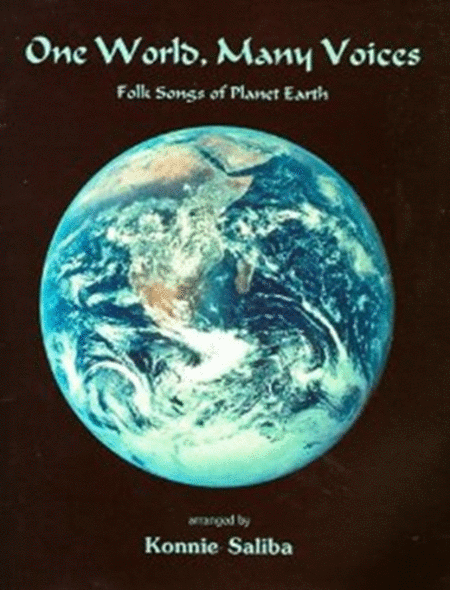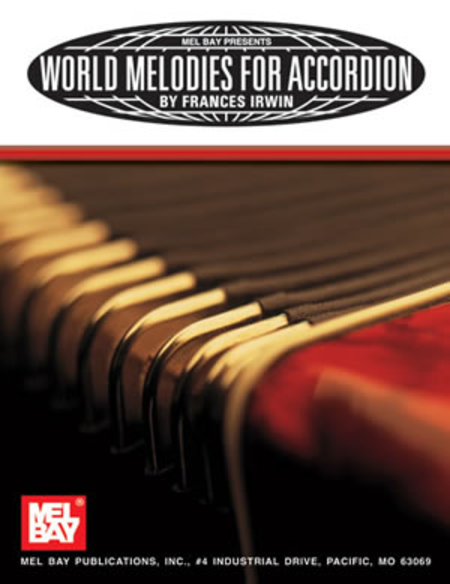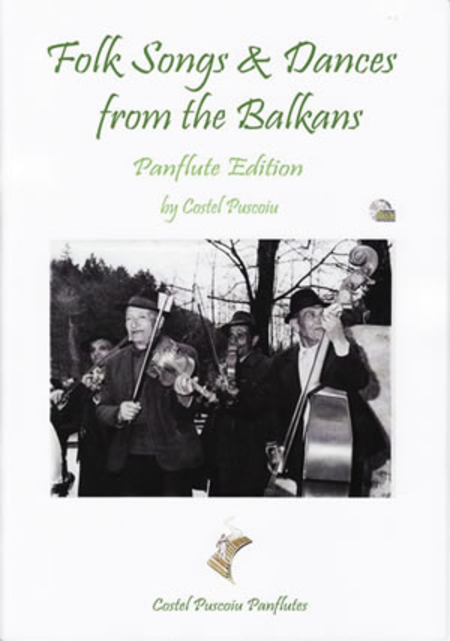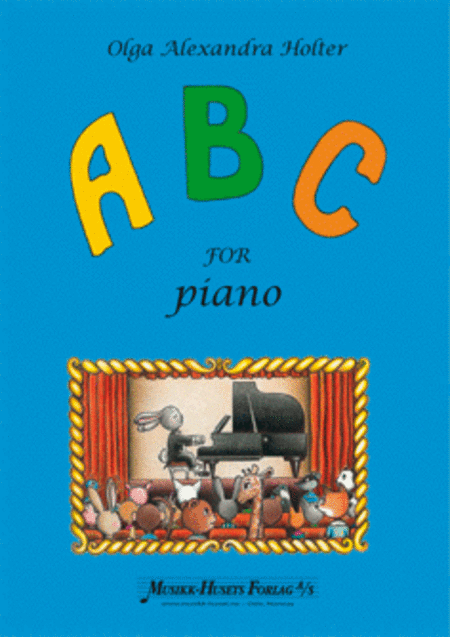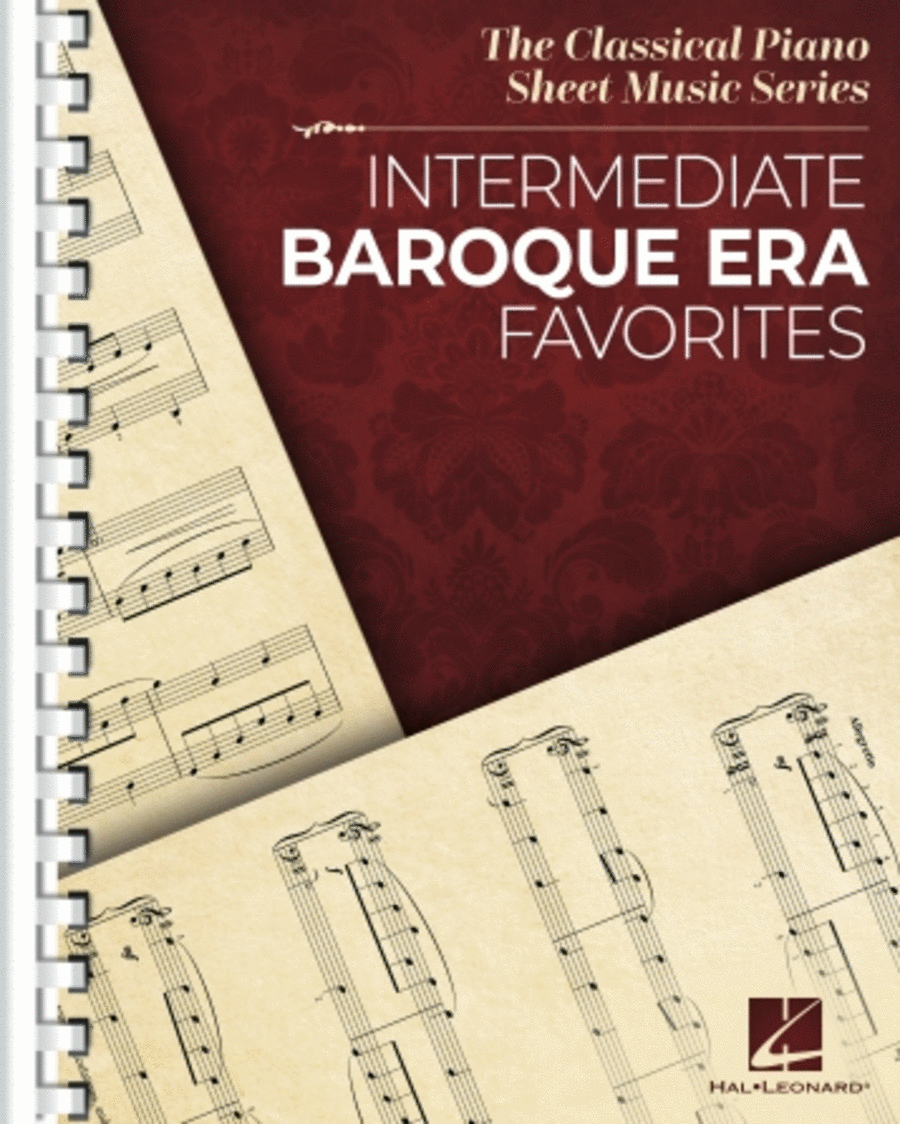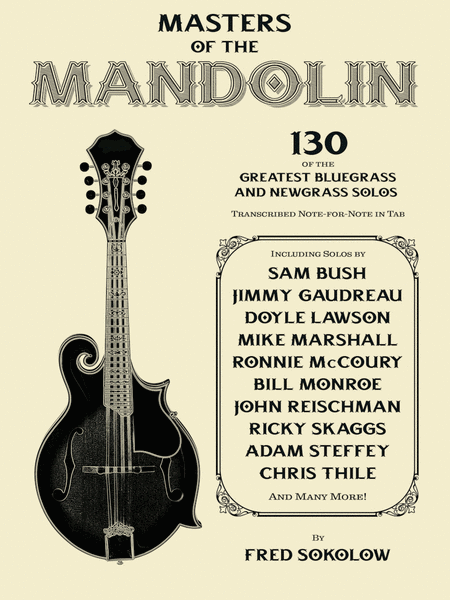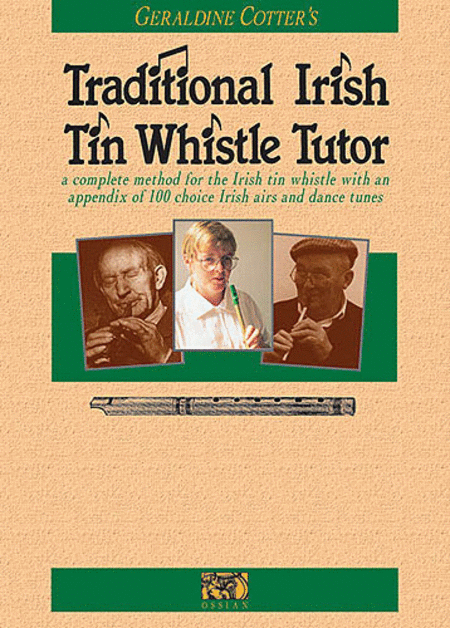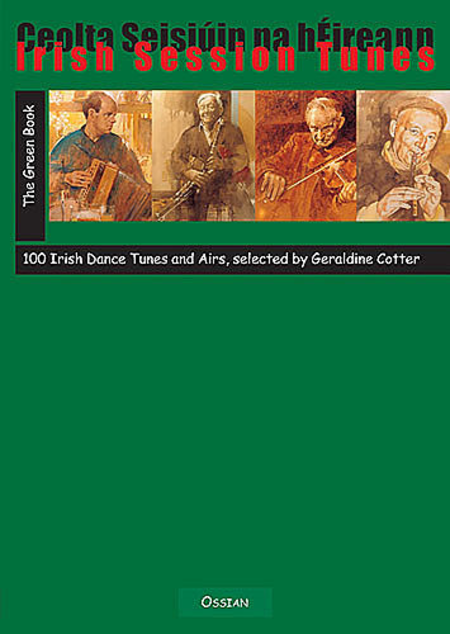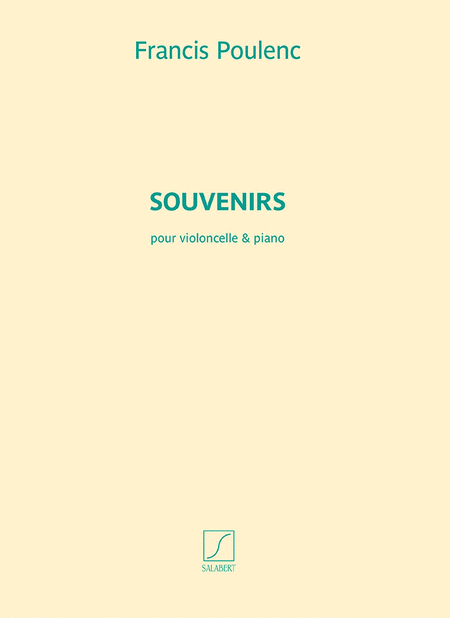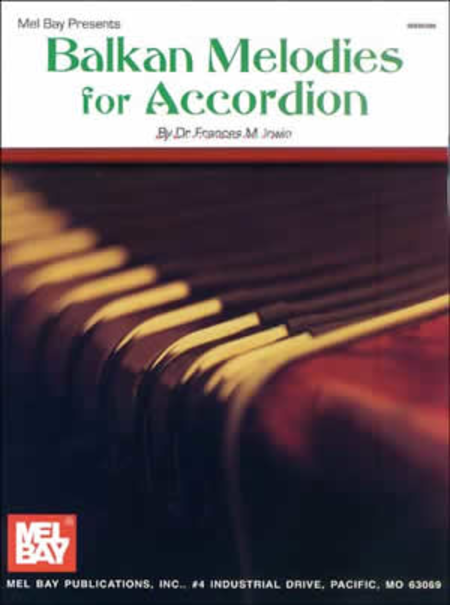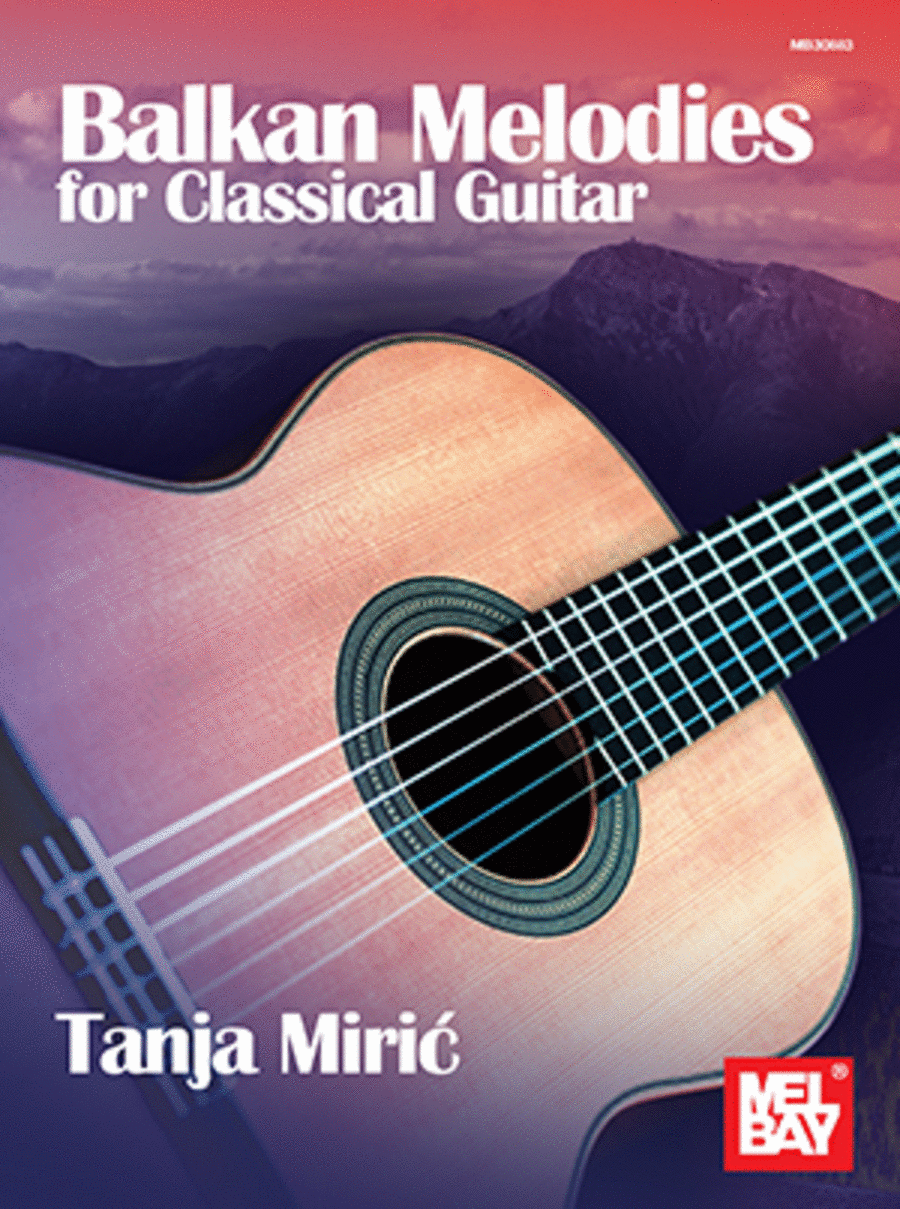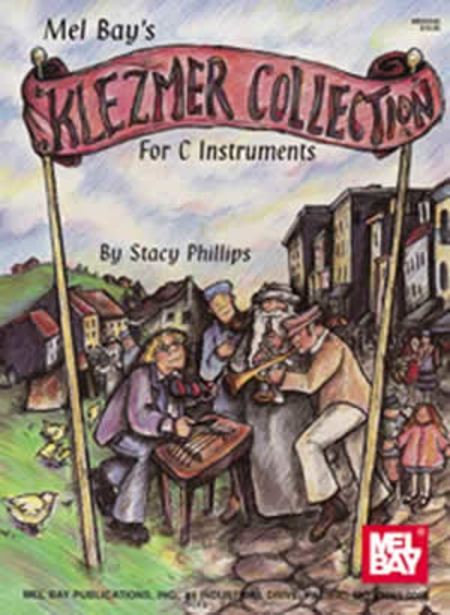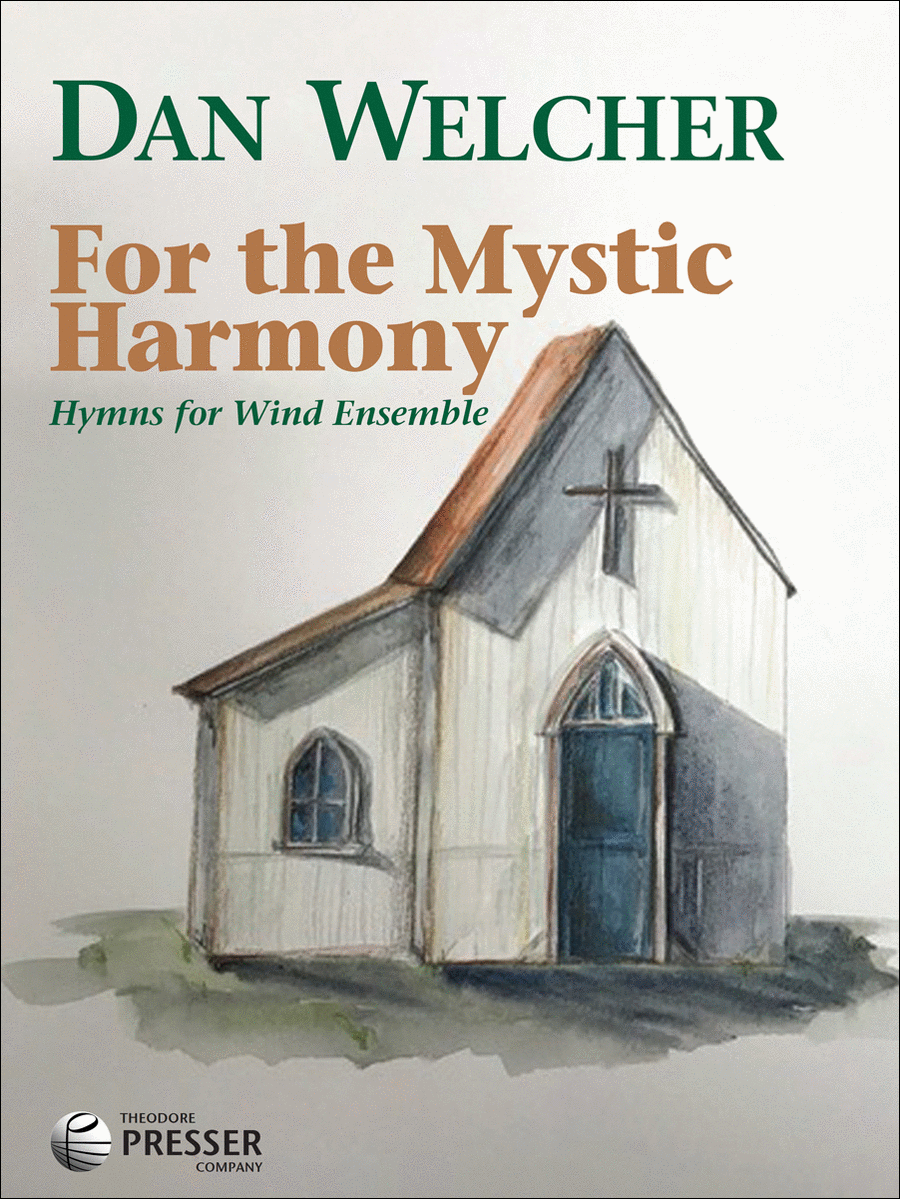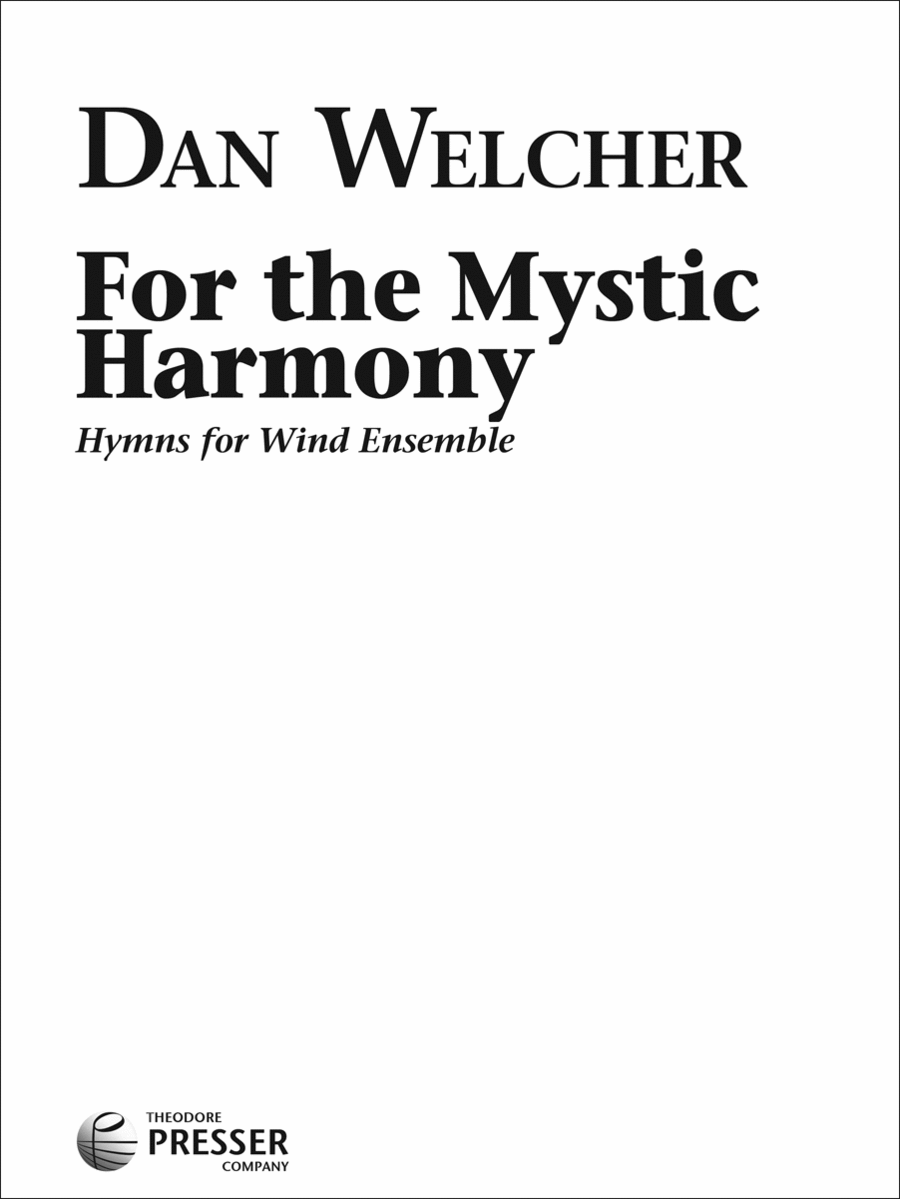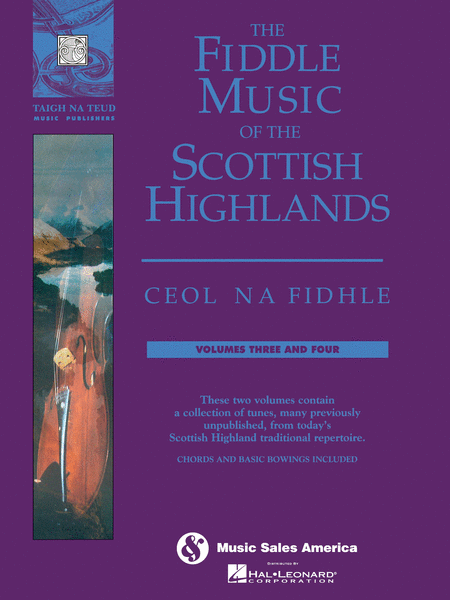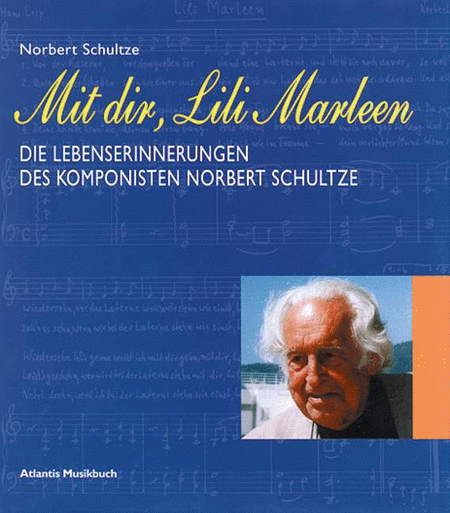|
| One World, Many Voices
Chorale Unison
Heritage Music Press
(Folk Songs of Planet Earth). Composed by Konnie Saliba. For unison choir, Orff ...(+)
(Folk Songs of Planet
Earth). Composed by
Konnie Saliba. For unison
choir, Orff instruments,
Small percussion. Level
3-6. Published by
Heritage Music Press
$26.95 - Voir plus => AcheterDélais: 1 to 2 weeks | | | |
| World Melodies for Accordion
Accordéon [Partition] - Facile
Mel Bay
By Frances Irwin. For Accordion (Keyboard). Solos. World Music. Level: Beginning...(+)
By Frances Irwin. For
Accordion (Keyboard).
Solos. World Music.
Level:
Beginning-Intermediate.
Book. Size 8.5x11. 106
pages. Published by Mel
Bay Publications, Inc.
$24.99 - Voir plus => AcheterDélais: 1 to 2 weeks | | | |
| Folk Songs and Dances From The Balkans - Pan Flute
Flûte de Pan [Partition + CD] - Facile
Mel Bay
For Flute. Solos. Baltic. Beginning-Intermediate. Book/CD Set. 24 pages. Publis...(+)
For Flute. Solos.
Baltic.
Beginning-Intermediate.
Book/CD Set. 24 pages.
Published by Mel Bay
Publications, Inc
$24.95 - Voir plus => AcheterDélais: 1 to 2 weeks | | | |
| ABC for Piano, Del 2
Piano seul
Musikk-Husets Forlag
ABC for piano, del 2' er en pianobok for litt viderekomne. Den er forst og frems...(+)
ABC for piano, del 2' er
en pianobok for litt
viderekomne. Den er forst
og fremst mente for barn,
men kan ogsa brukes av
voksne som vil friske opp
pianokunnskapene sine,
laere noter pa egen hand,
eller hjelpe sine barn
som laerer a spille.
Boken inneholder et
utbrettsark med oversikt
over alle tangentene og
notene + litt
teori.
Boken
inneholder mange morsomme
oppgaver. Det er brukt
mangefolketoner, bade fra
Norge og andre europeiske
land, samt
populaerebarnesanger.
Innhold:
Lille
bjork
Kjerringa med
staven
En
hostkveld
Na skal vi
telle
Humoreske - L.
Mozart
mary had a
little lamb
Tamburin
-J.
Rameau
Vuggesang
Blinke, blinke stjerne
lill
I min
hage
Et stykke - J.
Arman
Jeg gikk meg
over sjo og
land
Preludium
Do
vne Trulte
Haren uti
gresset
Kjaere gasen
min er stjalet
Jeg
gikk en tur pa
stien
Min nye
ball
Etyde - L.
Shytte
Marching Pigs
- Boris Berlin
Vesle
Lise er sa liten - P.I.
Tschaikovsky
Etyde
Potet-sang
Etyde -
C. Czerny
Min hatt
den har tre
kanter
Alle
fugler
Gratulerer med
dagen
Hurra for
deg!
Ola
Diger
Musette - L.
Mozart
I Dovregubbens
hall E. Grieg
Etyde -
C. Czerny
Menuet -
W.A. Mozart
En
spok
O sole
mio!
Per
Sjuspring
Oh, when
the Saints go marching
in
Pa var
bryllupsdag
Etyde -
N. Paganini
Gjok -
Couperin
Jeg trenger
deg for
dansen
Morgenstemning
- E. Grieg
Du er den
eneste
Skalaer,
arpeggio og
akkorder
Schumanns
regler for
musikere
Olga
Alexandra Holter er fodt
i Russland. Etter a
graduere fra Gnesyn's
Musikkakademi i Moskva,
en av de mest kjente
hoyskolene i Russland,
begynte hun a jobbe som
pianolaerer. Senere tok
hun mastergrad i
lingvistikk og
pedagogikk. Hun kom til
Norge i 1993. For a fa en
grundig forstaelse av det
norske musikk-pedagogiske
systemet gikk hun pa
Musikkhogskolen i Oslo,
hvor hun studerte hos den
kjente pianisten Liv
Glaser. I 1999 etablerte
Olga
Barnemusikkakademiet,
hvor hun i dag jobber som
pianolaerer og daglig
leder
$23.95 - Voir plus => AcheterDélais: 4 to 6 weeks | | | |
| Intermediate Baroque Era Favorites
Piano seul
Hal Leonard
Spiralbound Piano SKU: HL.338219 The Classical Piano Sheet Music Serie...(+)
Spiralbound Piano SKU:
HL.338219 The
Classical Piano Sheet
Music Series.
Composed by Various.
Piano. Baroque.
Softcover. 88 pages.
Published by Hal Leonard
(HL.338219). ISBN
9781540089021. UPC:
840126913378.
9.0x12.0x0.225
inches. The
Classical Piano Sheet
Music Series includes
compilations of
intermediate level
pieces, with an
easy-to-use coil binding
so the music lays flat,
ensuring smooth page
turns. Includes:
ANONYMOUS: Minuet in C
minor, BWV Appendix 121
• Minuet in D
minor, BWV Appendix 132
• Minuet in G
Major, BWV Appendix 116
• Musettein D
Major, BWV Appendix 126
CARL PHILIPP EMANUEL
BACH: March in D Major,
BWV Appendix 122 •
March in G Major, BWV
Appendix 124 •
Solfegietto in C minor,
H. 220 JOHANN SEBASTIAN
BACH: Invention No. 1 in
C Major, BWV 772 •
Invention No. 2 in C
minor, BWV 773 •
Invention No. 4 in D
minor, BWV 775 •
Prelude in C Major, BWV
846 • Prelude in C
Major, BWV 924 •
Prelude in C Major, BWV
939 • Prelude in C
minor, BWV 999 •
Prelude in D minor, BWV
926 WILHELM FRIEDMANN
BACH: Allegro in A Major
JOHN BLOW: Courante in C
Major • Prelude in
C Major ARCANGELO
CORELLI: Gavotta in F
Major FRANCOIS COUPERIN:
Benevolent Cuckoos Under
Yellow Dominos •
Berceuse JEAN-FRANCOIS
DANDRIEU: Lament
LOUISE-CLAUDE DAQUIN: The
Cuckoo GEORGE FRIDERIC
HANDEL: Courante in G
Major • Minuet in F
Major • Rigaudon in
G Major •
Sarabande, HWV 437 JOHANN
PACHELBEL: Sarabande in
B-flat Major CHRISTIAN
PETZOLD: Minuet in G
Major, BWV Anh. 114
• Minuet in G
minor, BWV Anh. 115 HENRY
PURCELL: Suite No. 1 in G
Major JEAN PHILIPPE
RAMEAU: Tambourin
ALESSANDRO SCARLATTI:
Aria in D minor DOMENICO
SCARLATTI: Minuet from
Sonata in C Major, L. 217
(K. 73b, P. 80) •
Sonata in A Major, L. 483
(K. 322, P. 360) •
Sonata in A minor, L. 378
(K. 3) • Sonata in
D minor, L. 423 (K. 32,
P. 14) • Sonata in
G Major, L. 79 (K. 391,
P. 364) GEORG PHILIPP
TELEMANN: Dance in G
Major. $12.99 - Voir plus => AcheterDélais: 24 hours - In Stock | | | |
| Look Inside Masters of the Mandolin
Mandoline
Hal Leonard
130 of the Greatest Bluegrass and Newgrass Solos. Mandolin. Bluegrass. Softcov...(+)
130 of the Greatest
Bluegrass
and Newgrass Solos.
Mandolin.
Bluegrass. Softcover.
With
guitar tablature. 184
pages.
Published by Hal Leonard
$29.99 - Voir plus => AcheterDélais: 24 hours - In Stock | | | |
| Traditional Irish Tin Whistle Tutor
Flûte irlandaise [Partition]
Ossian Publications
By Geraldine Cotter (Arranger). For Pennywhistle. Irish, Traditional, Folk, Celt...(+)
By Geraldine Cotter
(Arranger). For
Pennywhistle. Irish,
Traditional, Folk,
Celtic. 104 pages.
Published by Ossian
Publications.
$14.95 - Voir plus => AcheterDélais: 24 hours - In Stock | | | |
| Irish Session Tunes: The Green Book
Ossian Publications
By Geraldine Cotter (Editor). For Flute, Tin Whistle, or Bagpipe. Irish, Folk, C...(+)
By Geraldine Cotter
(Editor). For Flute, Tin
Whistle, or Bagpipe.
Irish, Folk, Celtic.
Sheet Music. 48 pages.
Published by Ossian
Publications.
(1)$14.95 - Voir plus => AcheterDélais: 24 hours - In Stock | | | |
| Souvenirs
Violoncelle, Piano - Intermédiaire
Salabert
Cello and Piano - intermediate SKU: BT.SLB-00595900 Extrait de la musi...(+)
Cello and Piano -
intermediate SKU:
BT.SLB-00595900
Extrait de la musique
de scène pour « Le
Voyageur sans bagages
». Composed by
Francis Poulenc.
Classical. Book and
Part(s). Composed 2016. 5
pages. Editions Salabert
#SLB 00595900. Published
by Editions Salabert
(BT.SLB-00595900).
INSSTR inches.
French. A
previously unreleased
piece by Francis Poulenc,
published with permission
from the Bibliothèque
Historique de la Ville de
Paris and Benoît
Seringe, secretary of the
Association des amis
de Francis Poulenc
[Association of the
Friends ofFrancis
Poulenc]. Le Voyageur
sans bagage [The
Traveller Without
Luggage], which had been
premiered in 1937 with
music by Darius Milhaud,
was reprised on 1 April
1944 at the Thé tre de
la Michodière; Francis
Poulenc was asked to
compose new stage music.
Theentire unpublished
score lay undiscovered
until Bérengère de
l’Épine, a
librarian at the
Bibliothèque
Historique de la Ville de
Paris, announced the
existence of a manuscript
in the Association de la
Régie Thé trale
collection.Poulenc
finalised the score
between 19 and 21 March
1944. It contains nine
songs, all written for a
small instrumental
ensemble including oboe,
clarinet, cello and
piano. However, at the
end of the manuscript,
the composer echoes the
second song Lent
[Slow] and creates
another version for cello
and piano; curiously, the
original version of the
song has not been erased
in the manuscript.
Poulenc seems to suggest
that we consider the
piece for cello and
piano, that we have
publishedhere, as a
different piece of music.
It was premiered on
Wednesday 23 January 2013
by Marc Coppey,
accompanied by
Jean-François Heisser,
in the organ auditorium
of the Conservatoire
National Supérieur de
Musique et Danse de Paris
(CNSMDP), during
thesymposium for the
fiftieth anniversary of
Poulenc’s
death.Given in a dramatic
context, some elements
allow us to get an idea
of the character of the
piece, which Benoît
Seringe, Poulenc’s
beneficiary, judiciously
chose to name
Souvenirs.The main
character of
Anouilh’s play,
Gaston, is suffering from
amnesia at the end of
World War One. Several
families try to claim
him; they want him to be
their missing relative.
The Renaud family prove
to be particularly
stubborn, but Gaston
doesnot recognize himself
in the child and young
man they depict: a
ruthless and violent
person. In Act 1 Scene 3,
left alone for a moment,
overwhelmed by the story
of the “old
Gaston†that is
gradually coming to
light, and outraged by
the desire ofthose around
him to appropriate him
(to the detriment of the
person he would like to
be from now on), he
whispers these words:
“You all have
proof, photographs that
look like me, memories as
clear as day…
I’ve listened to
you all and it’s
slowlycausing a hybrid
person to rise up in me;
a person in which there
is a piece of each of
your sons and nothing of
me.†Poulenc chose
to place the second piece
from his stage music
score as these words are
spoken.He borrowed part
of the material, as he
often did, from an
earlier composition. In
this particular case, the
beginning is a recycled
version of the
“slow and
melancholicâ€
section from
L’Histoire de
Babar , composed
between 1940 and 1945,
andpremiered in 1946
(unless it is Babar
that reuses the
musical idea from
Voyageur ).The
eponymous elephant
decides to leave in
search of the great
forest. He embraces the
old lady, promises her he
will return and reassures
her that he will never
forget her. Left alone,
the old lady, feeling sad
and pensive, wonders when
she’ll seeher
friend Babar again. The
situation is similar to
that in Voyageur sans
bagage: solitude,
sadness, a distressing
and introspective time,
fear of oblivion, the
presence of
memories…
Pi
èce inédite de
Francis Poulenc,
publiée avec
l’autorisation de
la Bibliothèque
historique de la ville de
Paris et de Benoît
Seringe, secrétaire de
l’Association des
Amis de Francis
Poulenc.Le 1er avril
1944, Le Voyageur sans
bagage d’Anouilh,
qui avait été
créé en 1937 avec
de la musique de Darius
Milhaud, est repris au
Thé tre de la
Michodière. Francis
Poulenc a été
sollicité afin
d’écrire une
nouvelle musique de
scène. On ignoraittout
de cette partition
inédite,
jusqu’au jour
où Bérengère de
l’Épine,
conservateur la
Bibliothèque
historique de la ville de
Paris, nous signala
l’existence
d’un manuscrit
dans le fonds de
l’Association de
la Régie thé
trale.Poulenc mit au
point sa partition entre
le 19 et le 21 mars 1944.
Elle comprend neuf
numéros, tous
écrits pour un petit
effectif instrumental
réunissant un
hautbois, une clarinette,
un violoncelle et un
piano.Cependant, la fin
de son manuscrit, le
compositeur reprend le no
2 Lent et en donne une
seconde version, pour
violoncelle et piano.
Curieusement, la version
originale de ce numéro
n’est pas
biffée dans le
manuscrit.Poulenc semble
nous inviter
considérer comme un
morceau distinct cette
pièce pour violoncelle
et piano dont nous
proposons ici
l’édition. Elle
a été créée
par Marc Coppey,
accompagné de
Jean-François Heisser,
lors du concert donné
durant lecolloque
organisé pour le
cinquantenaire du
décès de Poulenc,
le mercredi 23 janvier
2013, salle
d’orgue du
Conservatoire National
Supérieur de Musique
et de Danse de Paris
(CNSMDP).Quelques
éléments sur le
contexte dramatique
permettront de se faire
une idée du
caractère du morceau,
que Benoît Seringe,
ayant droit Poulenc, a
judicieusement choisi
d’intituler
Souvenirs.Le personnage
principal de la pièce
d’Anouilh, Gaston,
a été retrouvé
amnésique la fin de la
Première Guerre
Mondiale. Plusieurs
familles le réclament.
On veut voir en lui un
parent disparu. Les
Renaud se montrent
particulièrement
tenaces ; maisGaston ne
parvient se
reconnaître dans
l’enfant et le
jeune homme dont on lui
trace le portrait : un
être violent et sans
scrupule. Au tableau 3 de
l’acte I, resté
seul un moment,
écrasé par
l’histoire de cet
autre lui-même
qu’il découvre
peu peu, indigné par
le désir des personnes
qui l’entourent de
le ramener elles au
détriment de celui
qu’il voudrait
être désormais, il
se murmure ces paroles :
« Vous avez tous des
preuves, des
photographies
ressemblantes, des
souvenirs précis
commedes crimes… je
vous écoute tous et je
sens surgir peu peu
derrière moi un
être hybride où il
y a un peu de chacun de
vos fils et rien de moi
»…C’est
sur ces mots que Poulenc
a choisi de placer le no
2 de sa partition de
musique de scène.Comme
il le fait souvent, il
emprunte une composition
antérieure une part de
son matériau. Dans ce
cas précis, il
réutilise pour le
début du morceau la
section « Lent et
mélancolique » de
l’Histoire de
Babar, composée entre
1940 et 1945, créée
en1946 ( moins que ce ne
soit Babar qui
réutilise
l’idée musicale
du Voyageur). Le
héros-éléphant
s’est décidé
partir pour retrouver la
grande forêt. Il a
embrassé la vieille
dame, lui a promis de
revenir, l’a
rassurée : jamais il
ne
l’oubliera.Rest�
�e seule, la vieille
dame, triste et pensive,
se demande quand elle
reverra son ami Babar. La
situation est similaire
celle du Voyageur sans
bagage : solitude,
tristesse, instantde
trouble et de retour sur
soi, crainte de
l’oubli,
présence des
souvenirs…. $11.95 - Voir plus => AcheterDélais: 4 to 6 weeks | | | |
| Balkan Melodies for Accordion
Accordéon [Partition] - Intermédiaire
Mel Bay
by Dr. Frances M. Irwin. For Accordion (Keyboard). solos. Non-Series. Baltic. Le...(+)
by Dr. Frances M. Irwin.
For Accordion (Keyboard).
solos. Non-Series.
Baltic. Level:
Intermediate. Book. Size
8.5x11. 56 pages.
Published by Mel Bay
Publications, Inc.
(2)$14.99 - Voir plus => AcheterDélais: 1 to 2 weeks | | | |
| Balkan Melodies for Classical Guitar
Guitare
Guitare classique - Intermédiaire
Mel Bay
Saddle-stitched, World Music. Baltic. Book. 36 pages. Mel Bay Publications, ...(+)
Saddle-stitched, World
Music.
Baltic. Book. 36 pages.
Mel
Bay Publications, Inc
#30883.
Published by Mel Bay
Publications, Inc
$14.99 - Voir plus => AcheterDélais: 24 hours - In Stock | | | |
| Klezmer Collection for C Instruments
Instruments en Do [Partition] - Intermédiaire
Mel Bay
by Stacy Phillips. For fiddle and violin. Jewish. Level: Intermediate. Book. Sol...(+)
by Stacy Phillips. For
fiddle and violin.
Jewish. Level:
Intermediate. Book.
Solos. Size 8.75x11.75.
192 pages. Published by
Mel Bay Pub., Inc.
$29.99 - Voir plus => AcheterDélais: 1 to 2 weeks | | | |
| For the Mystic Harmony
Theodore Presser Co.
Band Bass Clarinet, Bassoon 1, Bassoon 2, Clarinet, Clarinet 1, Clarinet 2, Clar...(+)
Band Bass Clarinet,
Bassoon 1, Bassoon 2,
Clarinet, Clarinet 1,
Clarinet 2, Clarinet 3,
Contrabass Clarinet,
Contrabassoon, English
Horn, Flute 1, Flute 2,
Oboe 1, Oboe 2, Piccolo,
alto Saxophone, soprano
Saxophone, tenor
Saxophone SKU:
PR.165001000 Hymns
for Wind Ensemble.
Composed by Dan Welcher.
Folio. Set of Score and
Parts.
4+24+24+16+8+4+4+24+12+12
+8+4+4+4+4+8+8+8+8+4+4+4+
4+8+8+8+8+8+8+8+8+4+16+4+
8+4+8+8+4+4+4+48 pages.
Duration 10 minutes, 41
seconds. Theodore Presser
Company #165-00100.
Published by Theodore
Presser Company
(PR.165001000). ISBN
9781491129241. UPC:
680160669776. 9 x 12
inches. Commissione
d for a consortium of
high school and college
bands in the north Dallas
region, FOR THEMYSTIC
HARMONY is a 10-minute
inspirational work in
homage to Norwood and
Elizabeth Dixon,patrons
of the Fort Worth
Symphony and the Van
Cliburn Competition.
Welcher draws melodic
flavorfrom five American
hymns, spirituals, and
folk tunes of the 19th
century. The last of
these sources toappear is
the hymn tune For the
Beauty of the Earth,
whose third stanza is the
quatrain: “For the
joy of earand eye, For
the heart and
mind’s delight,
For the mystic harmony,
Linking sense to sound
and sight,â€giving
rise to the work’s
title.
This work,
commissioned for a
consortium of high school
bands in the north Dallas
area, is my fifteenth
maturework for wind
ensemble (not counting
transcriptions). When I
asked Todd Dixon, the
band director
whospearheaded this
project, what kind of a
work he most wanted, he
first said
“something
that’s basically
slow,†butwanted to
leave the details to me.
During a long subsequent
conversation, he
mentioned that his
grandparents,Norwood and
Elizabeth Dixon, were
prime supporters of the
Fort Worth Symphony,
going so far as to
purchase anumber of high
quality instruments for
that orchestra. This
intrigued me, so I asked
more about his
grandparentsand was
provided an 80-page
biographical sketch.
Reading that article,
including a long section
about theirdevotion to
supporting a young man
through the rigors of the
Van Cliburn International
Piano Competition fora
number of years, moved me
very much. Norwood and
Elizabeth Dixon
weren’t just
supporters of the arts;
theywere passionate
lovers of music and
musicians. I determined
to make this work a
testament to that love,
and tothe religious faith
that sustained them both.
The idea of using extant
hymns was also suggested
by Todd Dixon,and this
10-minute work is the
result.I have employed
existing melodies in
several works, delving
into certain kinds of
religious music more than
a fewtimes. In seeking
new sounds, new ways of
harmonizing old tunes,
and the contrapuntal
overlaying of one
tunewith another, I was
able to make works like
ZION (using 19th-century
Revivalist hymns) and
LABORING SONGS(using
Shaker melodies) reflect
the spirit of the
composers who created
these melodies, without
sounding likepastiches or
medleys. I determined to
do the same with this new
work, with the added
problem of
employingmelodies that
were more familiar. I
chose five tunes from the
19th century: hymns,
spirituals, and
folk-tunes.Some of these
are known by differing
titles, but they all
appear in hymnals of
various Christian
denominations(with
various titles and
texts). My idea was to
employ the tunes without
altering their notes,
instead using aconstantly
modulating sense of
harmony —
sometimes leading to
polytonal harmonizations
of what are
normallysimple four-chord
hymns.The work begins and
ends with a repeated
chime on the note C: a
reminder of steeples,
white clapboard
churchesin the country,
and small church organs.
Beginning with a
Mixolydian folk tune of
Caribbean origin
presentedtwice with
layered entrances, the
work starts with a
feeling of mystery and
gentle sorrow. It
proceeds, after along
transition, into a second
hymn that is sometimes
connected to the sea
(hence the sensation of
water andwaves throughout
it). This tune, by John
B. Dykes (1823-1876), is
a bit more chromatic and
“shifty†than
mosthymn-tunes, so I
chose to play with the
constant sensation of
modulation even more than
the original does. Atthe
climax, the familiar
spiritual “Were you
there?†takes over,
with a double-time
polytonal feeling
propelling itforward at
“Sometimes it
causes me to
tremble.â€Trumpets
in counterpoint raise the
temperature, and the
tempo as well, leading
the music into a third
tune (ofunknown
provenance, though it
appears with different
texts in various hymnals)
that is presented in a
sprightlymanner. Bassoons
introduce the melody, but
it is quickly taken up by
other instruments over
three
“verses,â€cons
tantly growing in
orchestration and volume.
A mysterious second tune,
unrelated to this one,
interrupts it inall three
verses, sending the
melody into unknown
regions.The final melody
is “For the Beauty
of the Earth.†This
tune by Conrad Kocher
(1786-1872) is commonly
sung atThanksgiving
— the perfect
choice to end this work
celebrating two people
known for their
generosity.Keeping the
sense of constant
modulation that has been
present throughout, I
chose to present this
hymn in threegrowing
verses, but with a twist:
every four bars, the
“key†of the
hymn seems to shift
— until the
“Lord of all,
toThee we praiseâ€
melody bursts out in a
surprising compound
meter. This, as it turns
out, was the
“mystery
tuneâ€heard earlier
in the piece. After an
Ivesian, almost polytonal
climax, the Coda begins
over a long B( pedal. At
first,it seems to be a
restatement of the first
two phrases of “For
the Beauty†with
long spaces between them,
but it soonchanges to a
series of
“Amenâ€
cadences, widely
separated by range and
color. These, too, do not
conform to anykey, but
instead overlay each
other in ways that are
unpredictable but
strangely comforting.The
third verse of “For
the Beauty of the
Earth†contains
this quatrain:“For
the joy of ear and eye,
–For the heart and
mind’s delightFor
the mystic harmonyLinking
sense to sound and
sightâ€and it was
from this poetry that I
drew the title for the
present work. It is my
hope that audiences and
performerswill find
within it a sense of
grace: more than a little
familiar, but also quite
new and unexpected. $150.00 - Voir plus => AcheterDélais: 24 hours - In Stock | | | |
| For the Mystic Harmony [Conducteur]
Theodore Presser Co.
Band Bass Clarinet, Bass Drum, Bassoon 1, Bassoon 2, Bongos, Castanets, Celesta,...(+)
Band Bass Clarinet, Bass
Drum, Bassoon 1, Bassoon
2, Bongos, Castanets,
Celesta, Clarinet,
Clarinet 1, Clarinet 2,
Clarinet 3, Contrabass
Clarinet, Contrabassoon,
English Horn, Euphonium,
Euphonium T.C., Flute 1,
Flute 2, Horn 1, Horn 2,
Horn 3 and more. SKU:
PR.16500100F Hymns
for Wind Ensemble.
Composed by Dan Welcher.
Sws. Full score. 48
pages. Duration 10
minutes, 41 seconds.
Theodore Presser Company
#165-00100F. Published by
Theodore Presser Company
(PR.16500100F). ISBN
9781491114421. UPC:
680160669783. 9 x 12
inches. Commissione
d for a consortium of
high school and college
bands in the north Dallas
region, FOR THEMYSTIC
HARMONY is a 10-minute
inspirational work in
homage to Norwood and
Elizabeth Dixon,patrons
of the Fort Worth
Symphony and the Van
Cliburn Competition.
Welcher draws melodic
flavorfrom five American
hymns, spirituals, and
folk tunes of the 19th
century. The last of
these sources toappear is
the hymn tune For the
Beauty of the Earth,
whose third stanza is the
quatrain: “For the
joy of earand eye, For
the heart and
mind’s delight,
For the mystic harmony,
Linking sense to sound
and sight,â€giving
rise to the work’s
title.
This work,
commissioned for a
consortium of high school
bands in the north Dallas
area, is my fifteenth
maturework for wind
ensemble (not counting
transcriptions). When I
asked Todd Dixon, the
band director
whospearheaded this
project, what kind of a
work he most wanted, he
first said
“something
that’s basically
slow,†butwanted to
leave the details to me.
During a long subsequent
conversation, he
mentioned that his
grandparents,Norwood and
Elizabeth Dixon, were
prime supporters of the
Fort Worth Symphony,
going so far as to
purchase anumber of high
quality instruments for
that orchestra. This
intrigued me, so I asked
more about his
grandparentsand was
provided an 80-page
biographical sketch.
Reading that article,
including a long section
about theirdevotion to
supporting a young man
through the rigors of the
Van Cliburn International
Piano Competition fora
number of years, moved me
very much. Norwood and
Elizabeth Dixon
weren’t just
supporters of the arts;
theywere passionate
lovers of music and
musicians. I determined
to make this work a
testament to that love,
and tothe religious faith
that sustained them both.
The idea of using extant
hymns was also suggested
by Todd Dixon,and this
10-minute work is the
result.I have employed
existing melodies in
several works, delving
into certain kinds of
religious music more than
a fewtimes. In seeking
new sounds, new ways of
harmonizing old tunes,
and the contrapuntal
overlaying of one
tunewith another, I was
able to make works like
ZION (using 19th-century
Revivalist hymns) and
LABORING SONGS(using
Shaker melodies) reflect
the spirit of the
composers who created
these melodies, without
sounding likepastiches or
medleys. I determined to
do the same with this new
work, with the added
problem of
employingmelodies that
were more familiar. I
chose five tunes from the
19th century: hymns,
spirituals, and
folk-tunes.Some of these
are known by differing
titles, but they all
appear in hymnals of
various Christian
denominations(with
various titles and
texts). My idea was to
employ the tunes without
altering their notes,
instead using aconstantly
modulating sense of
harmony —
sometimes leading to
polytonal harmonizations
of what are
normallysimple four-chord
hymns.The work begins and
ends with a repeated
chime on the note C: a
reminder of steeples,
white clapboard
churchesin the country,
and small church organs.
Beginning with a
Mixolydian folk tune of
Caribbean origin
presentedtwice with
layered entrances, the
work starts with a
feeling of mystery and
gentle sorrow. It
proceeds, after along
transition, into a second
hymn that is sometimes
connected to the sea
(hence the sensation of
water andwaves throughout
it). This tune, by John
B. Dykes (1823-1876), is
a bit more chromatic and
“shifty†than
mosthymn-tunes, so I
chose to play with the
constant sensation of
modulation even more than
the original does. Atthe
climax, the familiar
spiritual “Were you
there?†takes over,
with a double-time
polytonal feeling
propelling itforward at
“Sometimes it
causes me to
tremble.â€Trumpets
in counterpoint raise the
temperature, and the
tempo as well, leading
the music into a third
tune (ofunknown
provenance, though it
appears with different
texts in various hymnals)
that is presented in a
sprightlymanner. Bassoons
introduce the melody, but
it is quickly taken up by
other instruments over
three
“verses,â€cons
tantly growing in
orchestration and volume.
A mysterious second tune,
unrelated to this one,
interrupts it inall three
verses, sending the
melody into unknown
regions.The final melody
is “For the Beauty
of the Earth.†This
tune by Conrad Kocher
(1786-1872) is commonly
sung atThanksgiving
— the perfect
choice to end this work
celebrating two people
known for their
generosity.Keeping the
sense of constant
modulation that has been
present throughout, I
chose to present this
hymn in threegrowing
verses, but with a twist:
every four bars, the
“key†of the
hymn seems to shift
— until the
“Lord of all,
toThee we praiseâ€
melody bursts out in a
surprising compound
meter. This, as it turns
out, was the
“mystery
tuneâ€heard earlier
in the piece. After an
Ivesian, almost polytonal
climax, the Coda begins
over a long B( pedal. At
first,it seems to be a
restatement of the first
two phrases of “For
the Beauty†with
long spaces between them,
but it soonchanges to a
series of
“Amenâ€
cadences, widely
separated by range and
color. These, too, do not
conform to anykey, but
instead overlay each
other in ways that are
unpredictable but
strangely comforting.The
third verse of “For
the Beauty of the
Earth†contains
this quatrain:“For
the joy of ear and eye,
–For the heart and
mind’s delightFor
the mystic harmonyLinking
sense to sound and
sightâ€and it was
from this poetry that I
drew the title for the
present work. It is my
hope that audiences and
performerswill find
within it a sense of
grace: more than a little
familiar, but also quite
new and unexpected. $25.00 - Voir plus => AcheterDélais: 24 hours - In Stock | | | |
| Fiddle Music Of The Scottish Highlands Vols 3 - 4
Violon
Music Sales
| | | |
| Schultze N Mit Dir Lili Marleen
Schott
(GEB) SKU: HL.49020861 Die Lebenserinnerungen des Komponisten Norbert ...(+)
(GEB) SKU:
HL.49020861 Die
Lebenserinnerungen des
Komponisten Norbert
Schultze. Composed by
Johann Christoph
Schultze. This edition:
Hardback/Hard Cover.
Book. Edition Schott.
Schwerpunkt dieses Buches
sind nicht allein die
Erinnerungen eines von
Grund auf echten
Musikers, sondern auch
seine politischen
Erkenntnisse und
Einsichten. Seit meinem
70. Lebensjahr ist
eigentlich jetzt mein
Lebensinhalt: mir uber
mein Leben und Wirken.
190 pages. Schott Music
#ATL 6206. Published by
Schott Music
(HL.49020861). ISBN
9783254002068.
8.0x9.0x0.649 inches.
German. Norbert
Schultze: E- oder
U-Komponist? Opern- oder
Schlagerkomponist?Genau
dazwischen, meint er
selbst und beschreibt
sein Leben, vom
Geburtsort Braunschweig
1911 uber Studium in Koln
und Munchen bis zum
Studentenbrettel Die vier
Nachrichter 1931, dem er
unter dem Pseudonym Frank
Norbert mit
Unterbrechungen 4 Jahre
lang angehort - zusammen
mit Kurd E. Heyne, Bobby
Todd und Helmut Kautner.
Dazwischen ist er
Opernkapellmeister in
Heidelberg und Darmstadt,
wird dort 1933 von den
neuen Machthabern
vertrieben, nach dem
Erfolg seiner Oper
Schwarzer Peter (Hamburg
1936) jedoch verwohnt und
privilegiert, darf
wahrend des Krieges
Filmmusiken komponieren
(u.a. Symphonie eines
Lebens) und seine zweite
Oper Das kalte Herz. 1945
drei Jahre Berufsverbot.
Schreibt danach wieder
Musik zu insgesamt 70
Filmen (u.a. 1958 Das
Madchen Rosemarie), zu
einem Musical Kapt'n
Bay-Bay (Hamburg 1950),
einer Operette Regen in
Paris (Nurnberg 1956),
der Fernseh-Oper Peter
der dritte (ZDF 1966) und
an die 100 Lieder und
Chansons, von denen Lili
Marleen (1938) ganz ohne
sein Zutun weltweite
Verbreitung findet.
Schultze erzahlt uber
seine Librettisten
(Walter Lieck, Hans Leip,
Fritz Grasshof u.a.) und
seine wichtigsten
Interpreten: Lale
Andersen und Marlene
Dietrich (Lili Marleen),
Rudolf Schock (Ach, ich
hab in meinem Herzen) und
Hans Albers (Nimm mich
mit, Kapitan, auf die
Reise). Er berichtet aus
sturmisch bewegter Zeit,
fuhrt uns offen und
ehrlich durch Hohen und
Tiefen seines Lebens,
ohne sich zu schonen und
ohne eigene Fehler zu
verschweigen.Ein
hochinteressantes
Dokument zur
Zeitgeschichte,
informativ, unterhaltsam
und spannend. $22.99 - Voir plus => Acheter | | |
|
